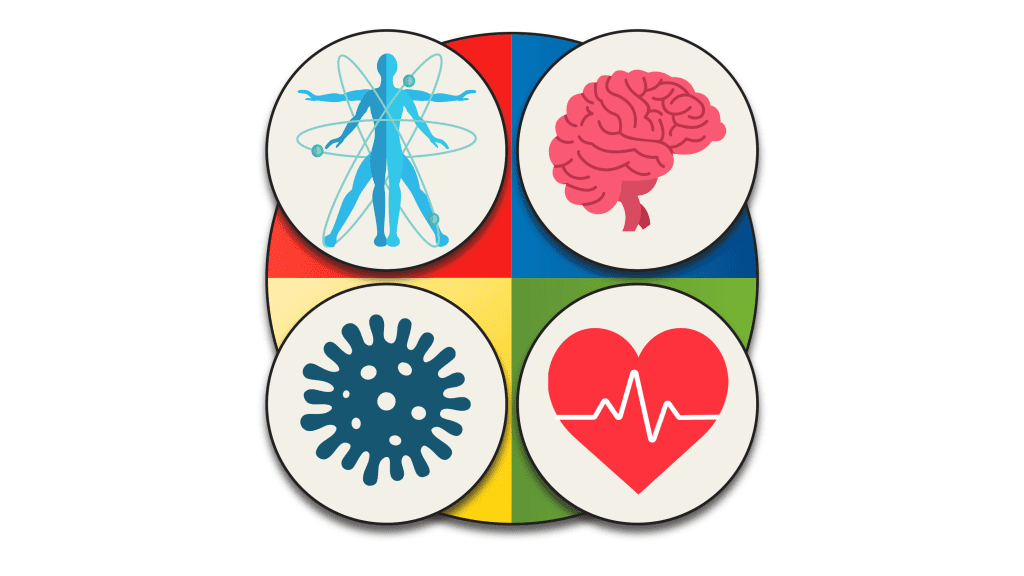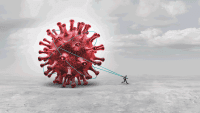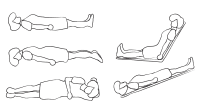Increase your knowledge to ensure early recognition and prompt treatment.
- The predicted number of individuals diagnosed with cancer is expected to be 29.5 million worldwide by 2040.
- Cancer patients may experience an oncologic emergencies that require hospitalization.
- Nurses with knowledge of oncologic emergencies and effective assessment skills can provide timely interventions to improve patient outcomes.
Learning Objectives
- Describe the following oncologic emergencies: superior vena cava syndrome, spinal cord compression, hypercalcemia, tumor lysis syndrome, syndrome of inappropriate antidiuretic hormone, and neutropenic fever.
- Describe signs, symptoms, diagnosis, and treatment considerations for the oncologic emergencies listed in Objective 1.
- Discuss key nursing interventions for the oncologic emergencies listed in Objective 1.
Nancy E. Thompson, a peer reviewer for this article, is on the speakers’ bureau for Merck. The relevant financial relationships have been mitigated. No relevant financial relationships were identified for any other individuals with the ability to control content of the activity.
Expiration: 8/1/26
The American Cancer Society estimates that in 2023 over 1.9 million individuals will receive a diagnosis of some form of cancer. Many will seek care for oncologic emergencies related to chemotherapy, radiation treatment, biological therapies, local tumors, and metastases. When an oncologic emergency arises, optimal patient care and outcomes depend on early recognition of signs and symptoms and immediate interventions to prevent damaging and devastating effects. Regardless of their specialization, all nurses need the knowledge and information to care for patients with oncologic emergencies.
For the purposes of this article, we’ll review four classifications of oncologic emergency—cardiovascular (superior vena cava syndrome), neurologic (spinal cord compression), metabolic (hypercalcemia, tumor lysis syndrome, and syndrome of inappropriate antidiuretic hormone [SIAH]), and infectious (neutropenic fever)—including appropriate nursing interventions (See Key nursing interventions.)


Key nursing interventions
All oncologic emergencies require close monitoring of the patient’s airway, breathing, circulation, lab values associated with each emergency, and safety interventions.
Superior vena cava syndrome (cardiovascular emergency)
- Monitor the patient’s airway, breathing, and circulation.
- Perform ongoing cardiopulmonary and neurologic assessments.
- Ensure the head of the patient’s bed is elevated.
- Document input and output.
Spinal cord compression (neurologic emergency)
- Monitor the patient’s airway, breathing, and circulation.
- Perform ongoing neurologic assessments.
- Perform pain assessments.
- Monitor the patient for steroid-induced diabetes.
- Document input and output.
Syndrome of inappropriate antidiuretic hormone and hypercalcemia (metabolic emergencies)
- Encourage oral fluids with sodium and a high-fiber diet.
- Administer antiemetics.
- Monitor input and output.
- Assess daily weights.
- Ensure safety precautions are in place.
Tumor lysis syndrome (metabolic emergency)
- Monitor the patient’s airway, breathing, and circulation.
- Assess for ECG changes.
- Monitor vital signs.
- Monitor lab values (potassium, calcium, phosphorus, uric acid).
- Assess fluid status.
Neutropenic fever (infectious emergency)
- Monitor temperature.
- Monitor vital signs.
- Take blood cultures as ordered.
- Administer prescribed antibiotics.
- Place patient in reverse isolation per organization protocols.
Cardiovascular emergency
Superior vena cava syndrome occurs when a tumor compresses or obstructs the superior vena cava at the point where it enters the right atrium. The superior vena cava, one of the two largest veins in the body, returns de-oxygenated blood from the upper half of the body above the diaphragm to the heart and then to the lungs. Lung cancer is the most common cause of superior vena syndrome; other causes include metastatic mediastinal tumors and metastatic lymph nodes.
Signs and symptoms
Patients with superior vena cava syndrome may experience edema or swelling of the face, neck, arms, hands, and thorax. They also may have a cough, a hoarse voice, dyspnea at rest, chest and shoulder pain, pleural effusion, cardiac tamponade, cardiac infiltration by malignancy, and cerebral edema. Increased intracranial pressure may result in visual disturbances, headaches, and changes in mental status.
Diagnosis and treatment
Diagnostic tests include chest x-ray, thoracic computed tomography (CT), thoracic magnetic resonance imaging (MRI), and a venogram if deep vein thrombosis is suspected. Treatment includes chemotherapy, radiation therapy, fibrinolytic therapy, and glucocorticoid therapy (such as prednisone and methylprednisolone), as well as cardiac stents to treat the underlying disease processes.
Nursing interventions
Monitor the patient’s airway, breathing, and circulation. Assess cardiopulmonary and neurologic status, maintain head-of-bed elevation, promote rest, and document input and output. If the provider orders I.V. fluids, monitor the patient’s fluid status to avoid overload and increasing edema.
Neurologic emergency
Spinal cord compression (sometimes called malignant spinal cord compression) can occur when a tumor presses on the spinal cord and nerve endings. It frequently results from metastases of bone cancers, paravertebral (near or adjacent to the spinal column) tumors, and spinal cord tumors. Spinal cord compressions also can result from metastatic breast, bone, lung, nasopharyngeal, and prostate cancers; lymphomas; and multiple myeloma. However, all cancers can metastasize to the spinal cord and cause compression.
Signs and symptoms
Commons signs and symptoms of spinal cord compression include new onset of back pain that worsens when lying down, spinal nerve pain, incontinence or bowel dysfunction, loss of motor function, limb weakness, and difficulty walking. Suspicion of spinal cord compression requires immediate and rapid intervention (within 24 hours of symptom onset) to prevent paraparesis (partial paralysis of the lower limbs) or permanent paralysis.
Diagnosis and treatment
MRI (the gold standard), x-rays, bone scans, and CT scans can confirm spinal cord compression. Treatment may include surgery, radiation, or steroid medications to relieve compression.
Nursing interventions
Perform ongoing assessment of neurologic function to identify changes from the patient’s admission baseline, provide prescribed pain management, monitor the skin to prevent pressure injury, and turn and reposition the patient as ordered by the provider. If a patient receives steroid medications, monitor blood sugar levels for steroid-induced hyperglycemia.
Effective pain management ensures patient comfort and function during an emergency. Maintain strict input and output documentation, and monitor the patient’s bowel movements. Patients may require bowel regimen medications to avoid constipation and strain. Provide emotional support for the patient and family in the face of potential permanent damage.
Metabolic emergency
Examples of metabolic emergencies include hypercalcemia, tumor lysis syndrome, and SIAH.
Hypercalcemia
Hypercalcemia, the most common life-threatening metabolic disorder, results when bones release more calcium than the kidneys can excrete or the bones can reabsorb, which causes an elevated serum calcium level of ≥10.6 mg/dL (normal range is 8.5 mg/dL to 10.5 mg/dL). Hypercalcemia occurs in 10% to 30% of patients with cancer, particularly those with multiple myeloma, breast cancer, head and neck cancers, and lung, kidney, and cervix cancers. The underlying causes of hypercalcemia include production of proteinaceous hormone (a parathyroid hormone-related protein), increased vitamin D levels, tumor invasion into the bone, immobility, certain medications, or parathyroid carcinoma. Hypophosphatemia, a serum phosphate concentration of <2.5 mg/dL (normal is 2.5 mg/dL to 4.1 mg/dL), also can lead to hypercalcemia.
Signs and symptoms. Many patients with hypercalcemia experience changes in mental status, confusion, weakness, poor appetite, thirst, constipation, nausea and vomiting, low urine output, bone pain, and coma.
Diagnosis and treatment. A calcium blood test can diagnosis hypercalcemia. Some patients experience cardiovascular changes (such as heart blocks, a shortening of the QT interval and the ST segment, and a prolonged PR interval), which also may indicate hypercalcemia.
Treatment consists of rapid rehydration to restore fluids, followed by administration of a diuretic such as furosemide. The provider also may order bisphosphonates (risedronate, alendronate, ibandronate, or pamidronate) to inhibit osteoclast activity (breakdown of the bones). Calcitonin can lower calcium levels faster than bisphosphonates, usually within 12 to 24 hours, but shouldn’t be used alone due to rapid calcium rebound.
Nursing interventions. If possible, encourage 3 to 4 quarts of oral fluids (especially those with sodium to help excrete calcium) per day. Other interventions include administering antiemetics for nausea and vomiting, documenting input and output, encouraging a high fiber diet to prevent constipation, and helping the patient to ambulate (if safe and permitted). Patients should avoid any medications that can affect serum calcium levels, including vitamins and antacids. Safety interventions for hospitalized patients include fall prevention and bed checks, especially in the presence of mental status changes.
Tumor lysis syndrome
Tumor lysis syndrome typically occurs when cancer treatments cause rapid, acute cell breakdown (lysis). It’s most common in patients with solid tumors and hematologic malignancies, and it typically appears 7 days after chemotherapy treatment. Tumor lysis syndrome can be diagnosed as the effects of cytotoxic agents rather than as a complication. This emergency also can occur in patients receiving radiation therapy and biologic therapies or those with electrolyte abnormalities. Because of electrolyte disturbances and the possibility of acute renal failure, patients experiencing the syndrome are at risk of developing lethal cardiac dysrhythmias. They require admission to critical care units for telemetry monitoring and assessment by oncologists and nephrologists.
Signs and symptoms. Signs and symptoms of tumor lysis syndrome vary according to the depleted serum electrolytes (potassium, calcium, phosphorus, uric acid), as confirmed through blood tests. Patients may present with azotemia (excessive amounts of urea and nitrogenous wastes in the blood), hyperuricemia, hyperphosphatemia, hyperkalemia, hypocalcemia, or acute renal failure. They may experience anorexia, nausea, vomiting, and diarrhea related to hyperkalemia. In addition, patients may have reduced urine output or dark-colored urine. Because of hyperkalemia, ECG changes might include a tall, peaked T-wave and a shortened QT interval. Patients with hypocalcemia frequently experience muscle cramps, tingling, and altered mental status.
Diagnosis and treatment. Tumor lysis syndrome is diagnosed by monitoring electrolyte imbalances, namely potassium, phosphate, and uric acid via urine analysis. Depending on serum blood tests, patients may require electrolyte replacement. Some may need continuous renal replacement therapy for symptomatic hypophosphatemia. Tumor lysis syndrome is associated with uric acid nephropathy and nephrocalcinosis (high calcium levels in the kidneys). To prevent high uric acid levels, the provider may prescribe allopurinol, acetazolamide, or sodium bicarbonate; for patients with kidney impairment, rasburicase can be administered intravenously.
Nursing interventions. Monitor the patient’s vital signs and manage electrolyte levels, especially potassium, calcium, phosphorus, and uric acid. Most patients will be admitted to critical care units for telemetry and strict intake and output monitoring. They’ll require I.V. hydration to increase urine output and to prevent kidney damage and a renal diet low in potassium and phosphorus.
Syndrome of inappropriate antidiuretic hormone
SIADH results from excess secretion of vasopressin, an antidiuretic hormone, from the pituitary gland. Because these patients retain water and can’t excrete dilute urine, they develop hyponatremia. This oncologic emergency is often associated with head and neck cancers, small-cell lung cancers, and bladder and prostate cancers.
Signs and symptoms. Patients with SIADH may experience sodium levels below 135 mEq/L (the normal range is 135 to 145 mEq/L). Early signs and symptoms include nausea, vomiting, fatigue, and muscle cramps. Later, patients may experience neurologic symptoms, such as changes in mental status, hallucinations, weakness, and coma.
Diagnosis and treatment. Providers diagnose SIADH based on blood and urine sodium and potassium levels, osmolality levels, and the presence of signs and symptoms. Depending on SIADH severity, treatment includes administration or restriction of fluids.
Nursing interventions. Perform thorough and ongoing assessments, particularly for neurologic status to identify changes from baseline and the onset of seizures. In addition, monitor serum sodium when administering I.V. hypertonic saline solutions (3%, 3.5%, and 7%), if ordered, and renal levels (creatine and bun). Urine volume can decrease with SIADH, so document the patient’s intake and output and record daily weights.
Infectious emergency
Infectious emergencies (neutropenic fever or neutropenia) most commonly occur related to cancer treatment, particularly chemotherapy. Bacterial and fungal infections increase morbidity and mortality rates. Possible infectious sites include the GI tract, skin, blood, lungs, and urinary tract.
Signs and symptoms
Signs and symptoms of neutropenia include tachycardia, hypotension, chills, sweating, cough, and shortness of breath.
Diagnosis and treatment
Patients diagnosed with neutropenic fever have an elevated oral temperature ≥38.3° C (101° F) for over an hour and an absolute neutrophil count (the number of neutrophils in the blood that help the body fight infections) of fewer than 500/mm3 (the normal absolute neutrophil count is 1,500 to 8,000/mm3). Neutrophils, calculated in a complete blood count with differential, account for 40% to 60% of white blood cells. Early intervention with antibiotics relies on the collection of blood cultures, which decreases mortality. Two sets of blood cultures are collected simultaneously from different sites to aid identification of the exact pathogen.
Nursing interventions
Monitor the patient’s vital signs and administer prescribed antibiotics and, as needed, antipyretics. Patients will require consultation with their oncologists and infectious disease providers to assist with their care. Take the patient’s temperature by mouth or via the axilla; avoid taking rectal temperatures. To decrease the risk of future infections, provide patient education related to proper handwashing; avoiding crowds, sick people, and fresh fruits and flowers; and immediately reporting any fevers to their healthcare provider.
Depending on your hospital’s protocols, the patient may be placed on reverse isolation, which could include a private room with dedicated medical equipment (stethoscope, a blood pressure cuff, and a thermometer according to hospital protocols). To protect the immunocompromised patient, staff and visitors must don proper protective equipment, gowns, gloves, and face masks.
Apply the knowledge
Oncologic emergencies result in patients with cancer having a higher incidence of emergency department visits than the general population. Lack of experience with these life-threatening events can lead to misdiagnosis and poor outcomes. With foundational knowledge of oncologic emergencies, nurses can help identify them and provide patient education to prevent reoccurrence. Ongoing and continuous assessment can prove life-saving.


Resources
Access the following resources to learn more about oncologic
emergencies:
- American Society of Clinical Oncology (asco.org) promotes continuing education, research, and healthcare access.
- Cancer Network (cancernetwork.com) provides access to up-to-date clinical information related to patient care.
- National Cancer Institute (cancer.gov/resources-for/patients) includes resources for patients, including information about treatment.
- Oncology Nursing Society (ons.org) promotes oncology nursing and patient care excellence with evidence-based education and treatment information.
The authors are assistant professors at Queensborough Community College in Bayside, New York.
American Nurse Journal. 2023; 18(8). Doi: 10.51256/ANJ082306
References
Alsharawneh A, Hasan AA. Cancer-related emergencies with the chief complaint of pain: Incidence, ED recognition, and quality of care. Int Emerg Nurs. 2021;56:100981. doi:10.1016/j.ienj.2021.100981
National Cancer Institute. Cancer statistics. September 25, 2020. https://www.cancer.gov/about-cancer/understanding/statistics
Gallaway MS, Idaikkadar N, Tai E, et al. Emergency department visits among people with cancer: Frequency, symptoms, and characteristics. J Am Coll Emerg Physicians Open. 2021;2(3):e12438. doi:10.1002/emp2.12438
Higdon ML, Atkinson CJ, Lawrence KV. Oncologic emergencies: Recognition and initial management. Am Fam Physician. 2018;97(11):741-8.
Hinkle JL, Cheever KH. Brunner & Suddarth’s Textbook of Medical-Surgical Nursing. 14th ed. Philadelphia, PA: LWW; 2017.
Jafari A, Rezaei-Tavirani M, Salimi M, Tavakkol R, Jafari Z. Oncological emergencies from pathophysiology and diagnosis to treatment: A narrative review. Soc Work Public Health. 2020;35(8):689-709. doi:10.1080/19371918.2020.1824844
Puri I, Sharma D, Gunturu KS, Ahmed AA. Diagnosis and management of tumor lysis syndrome. J Community Hosp Intern Med Perspect. 2020;10(3):269-72. doi:10.1080/20009666.2020.1761185
Kaplow R, Iyere K. Recognizing and preventing tumor lysis syndrome. Nursing. 2016;46(11):26-33. doi:10.1097/01.NURSE.0000502751.87828.2d
Klemencic S, Perkins J. Diagnosis and management of oncologic emergencies. West J Emerg Med. 2019;20(2):316-22. doi:10.5811/westjem.2018.12.37335
Koth J. Diagnosis and treatment of oncologic emergencies. Radiol Technol. 2019;91(2):161-72.
Morin S, Grateau A, Reuter D, et al. Management of superior vena cava syndrome in critically ill cancer patients. Support Care Cancer. 2018;26(2):521-8. doi:10.1007/s00520-017-3860-z
Pirschel C. Oncology nurses’ role in recognizing and addressing oncologic emergencies. ONS Voice. October 2, 2018. voice.ons.org/news-and-views/oncology-nurses-role-in-recognizing-and-addressing-oncologic-emergencies
Sacharian K. STAT: Superior vena cava syndrome. Clin J Oncol Nurs. 2020;24(6):712. doi:10.1188/20.CJON.712
Siegel RL, Miller KD, Wagle NS, Jemal A. Cancer statistics, 2023. CA Cancer J Clin. 2023;73(1):17-48. doi:10.3322/caac.21763
Sullivan-Tevault M. Oncological emergencies: Recognize and respond. Nursing CE Central. nursingcecentral.com/lessons/oncological-emergencies-recognize-and-respond
Torigoe T, Imanishi J, Yazawa Y, et al. Oncologic emergency in patients with skeletal metastasis of unknown primary. Acute Med Surg. 2021;8(1):e600. doi:10.1002/ams2.600
Troke R, Andrewes T. Nursing considerations for supporting cancer patients with metastatic spinal cord compression: A literature review. Br J Nurs. 2019;28(17): S24-9. doi:10.12968/bjon.2019.28.17.S24
Webster JS, Kaplow R. Tumor lysis syndrome: Implications for oncology nursing practice. Semin Oncol Nurs. 2021;37(2):151136. doi:10.1016/j.soncn.2021.151136
Key words: cancer, oncologic emergencies, oncology, chemotherapy, cancer treatment


















